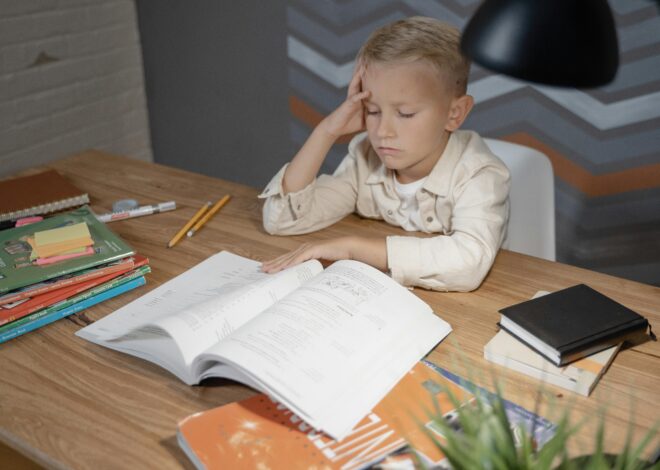
The Bedtime Secret That Builds Emotional Intelligence
The Bedtime Secret That Builds Emotional Intelligence
Last week, a mom in my practice collapsed into the couch cushions during our session and whispered, “I just can’t do the bedtime battle anymore.” Her five-year-old had been resisting sleep for months — demands for water, suddenly urgent questions about dinosaurs, elaborate negotiations worthy of a corporate lawyer. She’d tried everything: earlier bedtimes, later bedtimes, charts with shiny stickers, threats involving lost privileges. Nothing worked. She felt like she was failing at the one moment of the day that was supposed to bring peace.
Here’s what I told her: You’re not failing. You’re just missing the hidden gift bedtime wants to give you.
Bedtime isn’t just about getting kids to sleep. It’s actually one of the most powerful daily opportunities to build your child’s emotional intelligence — that crucial ability to understand, express, and regulate feelings that will serve them for life. And the secret? It’s simpler (and more beautiful) than you think.
Why Bedtime Feels Like a Battle (And What’s Really Happening)
When your child resists bedtime, they’re not trying to torture you (even though it might feel that way at 9 PM on a Tuesday). What’s actually happening is a perfect storm of developmental needs colliding with modern life.
Think about it: Bedtime means separation. It means letting go of you, letting go of the day, surrendering control to sleep. For a child’s developing brain — especially one still building neural pathways around emotional regulation and trust — that’s genuinely scary. According to research published by the American Academy of Pediatrics, nearly 50% of parents report regular bedtime resistance, and it’s often rooted in what attachment researchers call “separation sensitivity.”
But here’s the beautiful part: this nightly moment of vulnerability is actually an invitation. Your child is unconsciously asking, “Will you help me feel safe enough to let go? Will you teach me how to calm my big feelings?”
When we respond to bedtime as purely logistical — focusing only on getting them to sleep — we miss the chance to teach them how to be with their emotions. And emotional intelligence? That’s the skill that research from Yale’s Center for Emotional Intelligence shows predicts everything from academic success to relationship health to mental wellness.
The Bedtime Secret: Emotional Check-Ins That Change Everything
The secret isn’t a magic phrase or a stricter routine (though routines help). It’s this: Use the 10 minutes before sleep as sacred emotional connection time. Not screen time. Not lecture time. Not even story time, necessarily. Feelings time.
Here’s how to make this work in real life, even when you’re exhausted:
1. The “Rose, Thorn, and Bud” Ritual
After lights are dimmed and your child is tucked in, ask them to share:
- Rose: Something good that happened today (builds gratitude and positive recall)
- Thorn: Something hard or frustrating (normalizes difficult emotions)
- Bud: Something they’re looking forward to tomorrow (creates hopeful anticipation)
You share yours, too. This isn’t interrogation — it’s connection. When your child hears you name a thorn (“I felt frustrated when I spilled coffee on my shirt”), they learn that all humans have mixed feelings, and that’s okay.
2. The Body Scan Wind-Down
Teach your child to notice their body’s signals by guiding them: “Let’s check in with your body. How does your tummy feel right now? Your shoulders? Your heart?” This builds interoceptive awareness — a fancy term for understanding what’s happening inside you emotionally and physically. Kids who can identify “my chest feels tight” are kids who can eventually say “I’m feeling anxious” and ask for help.
3. The Worry Window
If your child’s mind is racing with worries (a common bedtime issue), create a “worry window” — a specific 3-5 minute time where they can share any worry without you trying to fix it. Your job? Just listen and validate: “That sounds like a big worry. Thank you for trusting me with it.” Then, physically “close” the worry window: “We’re putting these worries on the shelf for tonight. Your job is to rest; my job is to keep you safe.”
4. The Connection Anchor
Create a simple physical touch ritual — a special handshake, three gentle back rubs, or a specific way you squeeze their hand. This becomes a somatic (body-based) anchor that says, “You’re safe. You’re loved. I’m here.” Mirror neurons in your child’s brain actually absorb your calm when you’re regulated and present.
5. The Tomorrow Preview
End with a brief, calming preview of tomorrow: “When you wake up, we’ll have breakfast together. Then you’ll go to school and see your friends. Then I’ll pick you up and we’ll be together again.” This reduces separation anxiety by helping kids visualize the secure cycle of connection.
| Tool | What It Does | How to Try It |
|---|---|---|
| Rose, Thorn, and Bud | Builds emotional vocabulary and gratitude | Ask your child to share one good, one hard, and one hopeful thing from their day |
| Body Scan Wind-Down | Teaches interoceptive awareness and self-regulation | Guide them to notice sensations in different body parts without judgment |
| Worry Window | Creates boundaries around anxious thoughts | Allow 3-5 minutes for worries, validate them, then “close” the window together |
| Connection Anchor | Provides somatic security and calm | Create a special touch ritual (handshake, back rubs) that signals safety |
| Tomorrow Preview | Reduces separation anxiety through predictability | Briefly describe the comforting rhythm of tomorrow’s reconnection |
What Happens When You Make This Shift
That mom I mentioned? Three weeks after we introduced these bedtime emotional check-ins, she texted me: “He asked for his worry window tonight before I could offer it. Then he fell asleep in 15 minutes. But more importantly — he told his teacher today that he was ‘feeling nervous’ about the spelling test. He’s naming his feelings now.”
That’s emotional intelligence in action. And it started at bedtime.
When you use those precious minutes before sleep to help your child process emotions, you’re literally building the neural pathways they need for emotional regulation. You’re teaching them that feelings aren’t emergencies — they’re information. That they’re not alone with their big emotions. That you’re a safe place to land.
And here’s the bonus: this practice doesn’t just build your child’s emotional intelligence. It builds yours, too. When you create space to hear about their thorns and roses, you’re modeling the very skills we all need — presence, empathy, non-reactive listening.
Your Gentle Next Step
You’ve already taken the hardest step — caring enough to rethink bedtime. This week, try just one of these tools. Maybe it’s the Rose, Thorn, and Bud. Maybe it’s the Connection Anchor. Start small, stay consistent, and watch what unfolds. You’re not just helping your child sleep better — you’re giving them the emotional foundation they’ll carry into every relationship, every challenge, every triumph for the rest of their lives. And that? That’s the kind of bedtime magic that changes everything.



